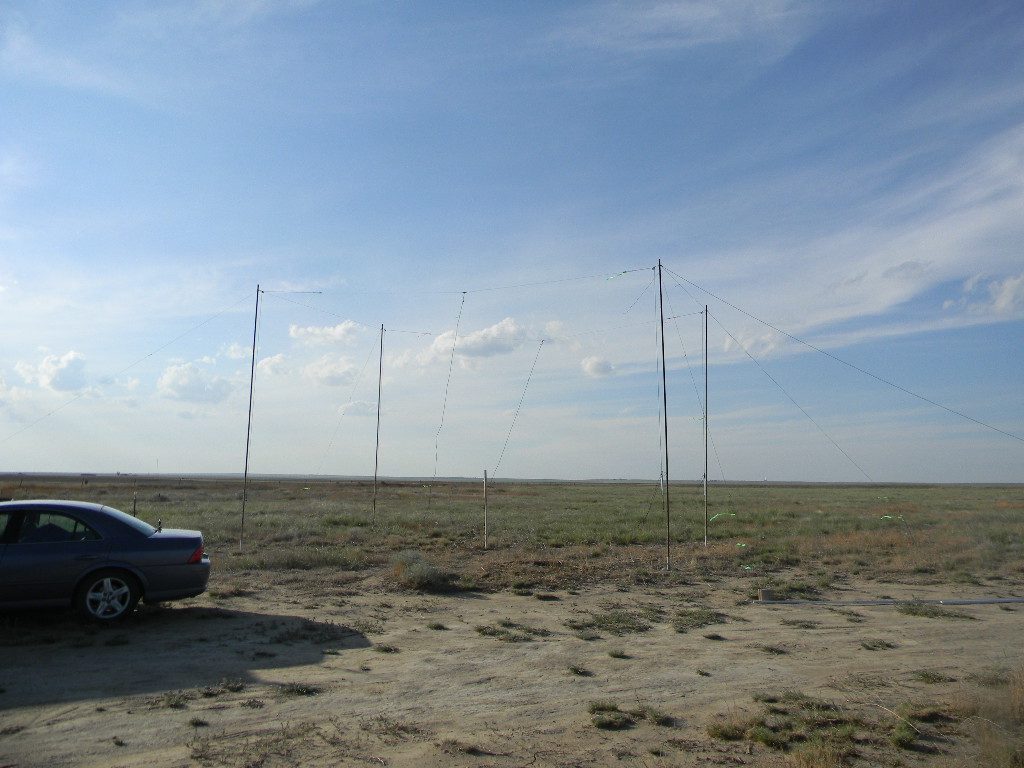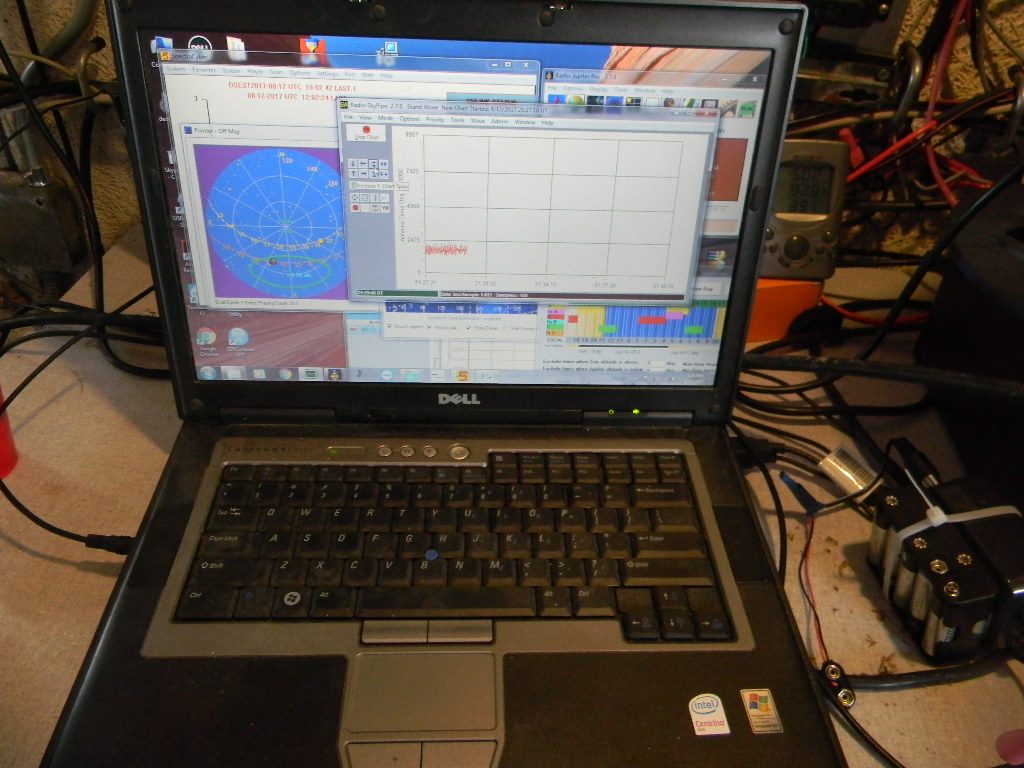This page describes our radio astronomy observing programs currently running.
Plishner Radio Astronomy & Space Science Center
These are the current experiments now in progress at our radio telescope site in Kiowa County:
60-Foot Dish Antenna:
[August 2018] Since early 2018, the 60 foot dish antenna is periodically being used for simultaneous SETI (Search for Extraterrestrial Intelligence] observations with Skip Crilly at the Greenbank Observatory 40-foot radio telescope in West Virginia.
With the pointing systems and receivers now being validated, we also are starting to use the 60-foot dish antenna for detecting astronomical radio source objects and the Milky Way at 1.4 GHz. We currently are using a SpectraCyber 1420 MHz Hydrogen Line Spectrometer. And we are starting to try RASDR4 (Radio Astronomy Software Defined Radio). A 1.4 GHz feed designed by Steve Plock is at the focus.
Archive of past 60 Foot Antenna Posts:
- August 15, 2018 – Greenbank & Haswell plots of simultaneous observation of NRAO 5690
- Observations using the 60-foot Dish during the Open House, August 11, 2018
- October 21, 2017 – SETI 40 Eridani with Skip Crilly
- September 2, 2017 – Drift Scan – Cygnus A search
Jupiter Radio Science Experiment “Radio Jove”:
20 MHz monitoring of Jupiter and its moon Io, using a 2-element phased dipole antenna.

The two dipole antenna wires are aligned east-west. The rear dipole antenna is slightly longer than the front one. And the length of the cable feed to the rear antenna is longer by a precisely measured amount. The effect is that the antenna system is more sensitive (has the most gain) to receive from the south. With the current feed lengths, the antenna is most sensitive at an elevation angle of 35 degrees above the horizon. The antenna system was designed by Rich Russel AC0UB, The wire antennas are suspended by four stainless steel pipes, with pulleys and springs. The pipes are placed in concrete bases, and structurally supported by guy ropes. The antenna structure was designed Dave Molter AD0QD.

Experiments in Colorado Springs:
430 MHz drift scan
This is similar to the drift scan with the 60 foot dish, but with a multi-element Yagi antenna. The antenna can be pointed along the meridian, in elevation from horizon to zenith. The current experiment scans for several days at a particular elevation, starting at 0 degrees elevation, and incrementing each next scan set 10 degrees higher. Repeating the scan across the same arc of the sky for several days helps separate local noise sources, and increases the effective sensitivity. The antenna’s current configuration has a beam size of about 30 degrees. This experiment is being used to help develop observing methods for the 60 foot dish antenna, and to validate mathematical reduction techniques.
Sudden Ionospheric Disturbance Monitor (SID):
-
- 25 kHz VLF Solar flare monitoring
- DSES SuperSID Radio Telescope – September 2017 Significant Solar Events Observed – Observations of M and X Class Solar Flares.
- This SID Monitor was used to measure an effect of the August 2017 solar eclipse as well. See the August 23, 2017 results summary (also posted under our Science Menu). The pdf write-up includes photos of the antenna and receiver.
- 25 kHz VLF Solar flare monitoring